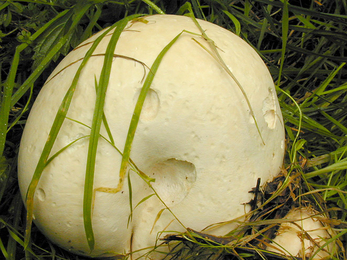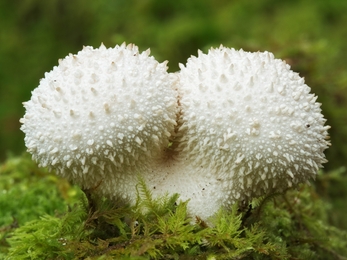The common puffball is a small, pear-shaped fungus that appears from July to November. It usually grows in clusters on woodland floors or grassy clearings. At first, its pale surface is covered with tiny bobbly warts, which later wear away leaving a patterned skin. When mature, a small hole forms at the top. At the slightest touch – whether from raindrops, a passing deer or a curious walker – the puffball releases a tiny cloud of spores, drifting away on the breeze to start new colonies. Its Latin name, Lycoperdon, literally translates to ‘wolf’s flatulence’ – a nod to the comical little clouds it produces.
By contrast, the giant puffball is an unmistakable sight. Growing in grassland, field edges and even on roadside verges, these fungi can be the size of a football, and occasionally much larger. A Victorian naturalist once recorded a specimen over 1.5 meters long and 1.3 meters wide! Beneath its thick leathery skin, a single puffball can generate trillions of spores, which eventually escape through cracks as the fruiting body matures. Like their smaller cousins, giant puffballs are saprotrophic, meaning they feed on dead organic matter – providing an essential recycling service that returns nutrients to the soil.



